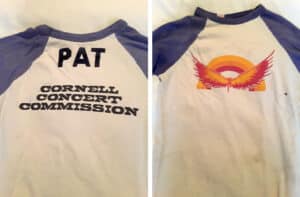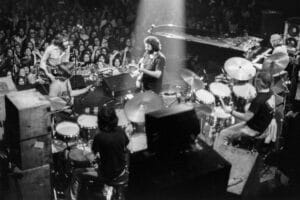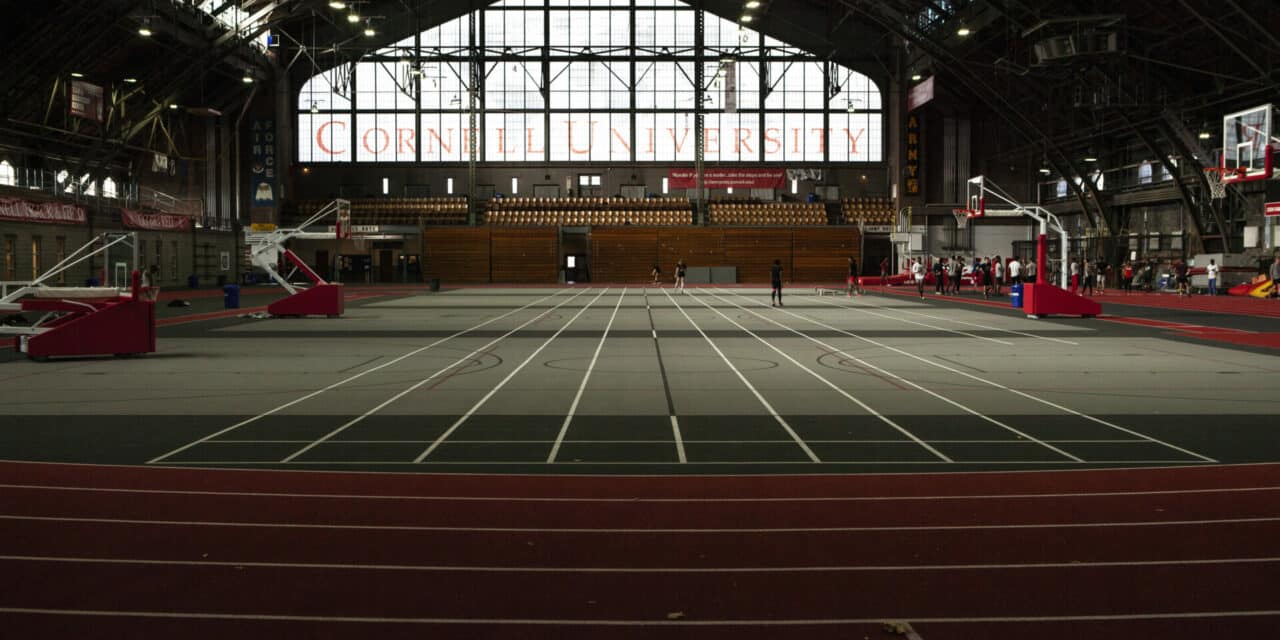WALL OF SOUND: In 1977, Cornell University’s Barton Hall, now an indoor track facility, was the scene of what is considered to be one of the greatest Grateful Dead shows. (Getty Images)
Former Cornell Concert Commission Chair Shares Recollections
Since an impeccable recording of the Grateful Dead’s May 8, 1977 performance at Cornell University’s Barton Hall became available several years after the show, the outing is widely considered to be one of the touring juggernaut’s very best. But anyone who tells you they were there and knew they were witnessing something special is probably lying, says someone who was in attendance.
Barton Hall, which was renovated in 2016 into a state-of-the-art indoor track facility, can seat about 4,800. In 1977, 8,000 general admission tickets were sold for the Dead, the only seats being bleachers on two sides of the building. That capacity was smaller than the arenas the Dead typically played and its acoustics left a bit to be desired.

On May 8 of this year, the day marking the 46th anniversary of the show, Bob Weir, Bill Kreutzmann and Mickey Hart, three members of the original group, will take the Barton Hall stage as part of Dead & Company’s final tour. It’s a fund-raiser for the Recording Academy’s MusiCares organization, which provides a safety net of critical health and welfare services to the music industry, and Cornell University’s 2030 Project, which aims to develop climate change solutions.
The upcoming show was an instant hot ticket, with separate lotteries for alumni and alumni who were at Cornell from the years 1977 through 1980.
O’Brien, who chaired the concert commission the year prior to the legendary show and still has the T-shirt that gave her all-access status, said she put her name in the lottery for alumni who were at the school in ’77 and was lucky enough to get two tickets. She plans to take her younger Deadhead brother and has heard from a Cornell administrator inviting her to come to the show as a guest because of her past commission status and pivotal role in producing the 1977 concert. The extra ticket means her brother’s wife gets to join the fun.

ROCKIN’ GOOD YEAR: The Grateful Dead perform at Winterland on March 20, 1977 in San Francisco, about six weeks before Barton Hall. (Getty Images)
O’Brien recalled getting the Dead to come to Ithaca back in ’77. At the time, the band could fill 20,000 capacity venues on the East Coast such as Roosevelt Stadium in Jersey City and the Spectrum in Philadelphia, both since demolished, and booking them into cozier confines of Barton Hall was a bit of a coup.
It was largely the work of Mike McEvoy, who handled booking on the university side and later went to work for Bill Graham Presents before settling into computer work.
Now a professor at the University of Waterloo in Ontario, O’Brien is a lifelong academic who majored in math and economics at Cornell and earned a doctorate at the University of Chicago.
O’Brien produced the telegram, complete with typos and unintelligible shorthand, that the commission received from David Hart of John Scher’s Monarch Entertainment Bureau confirming the date.
In addition to Barton Hall, the concert commission staged shows in a smaller venue, Bailey Hall, that held about 1,500 and where the Jerry Garcia Band performed, O’Brien said.
According to at least one recent news story, the concert commission was $100,000 in debt when the Dead show pushed it back toward the black, but O’Brien disputes that account and insists the outfit made money the year she chaired it.
It is true, however, that the university was on the hook for money-losing shows until Scher came along and started taking on the financial risk.
A university staffer and advisor to the concert commission had esoteric tastes and brought in eclectic acts such John McLaughlin and Dr. John, which led to years of red ink.
“They had a couple of disasters before I got to campus,” O’Brien said. “There was a Deep Purple concert that was supposed to happen in the football stadium. I think it was raining, which is a not an infrequent event in Ithaca, and the band decided they didn’t feel like playing, so they didn’t go on. There was a riot. There was damage done to the stadium. I don’t think they had another concert in the stadium, maybe ever.”







